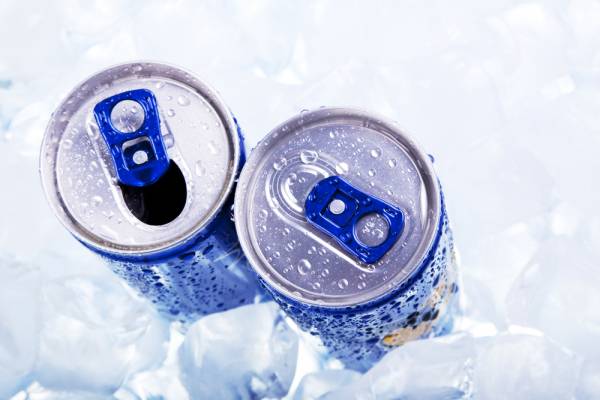Energy drinks are bad juju for athletes, especially adolescent athletes. With the exception of studies conducted by the energy drink industry, research and medical articles addressing energy drinks condemn their use by consumers, but in particular, their use by youth.
Despite this, energy drinks continue to be readily accessible to youth, who continue to buy and consume them. What are energy drinks? Why are they dangerous to youth and why are energy drinks so enticing to them?
A Dose of Caffeine and Sugar
Energy drinks provide energy. Sounds simple and sounds safe, right? This is where simple ends and trouble begins.
Energy drinks contain highly concentrated amounts of caffeine and sugar, among other ingredients. The caffeine in energy drinks comes in many different forms, under many different names. Because of this, ingredient labels can be misleading and make it difficult to determine how much caffeine is in the drink.
PERSPECTIVE: Energy Drinks and Performance: The Good, The Bad, and The Ugly
Under the generic term “caffeine,” energy drinks can contain natural caffeine, as well as ingredients that contain caffeine. Caffeine containing ingredients such as yerba mate, taurine, cacao, or guarana are not required to be separately listed as additional sources of the stimulant. Many drinks also contain additional ingredients, including herbal supplements, which have not been safety tested for children.
“Incredibly, some energy drinks contain up to 500 milligrams of caffeine per can, which is the equivalent of drinking fourteen cans of soda at one time.”
Manufacturers of energy drinks pulled a fast one on consumers. Since they registered and market their energy drinks as supplements, they are outside the jurisdiction of the FDA. Manufacturers do not have to reveal the actual amount of caffeine in an energy drink and there is also no limit to how much they can put in.
What’s the Big Deal About a Little Caffeine?
According to the American Academy of Pediatrics (AAP), if adolescents consume caffeine, they should not consume more than 100 milligrams per day. That’s the amount in a cup of coffee. Incredibly, some energy drinks contain up to 500 milligrams of caffeine per can, which is the equivalent of drinking fourteen cans of soda at one time. Shocked and disgusted yet? Read on.

Caffeine poisoning can occur at levels higher than 400 milligrams a day in adults, above 100 milligrams a day in adolescents, and at 2.5 milligrams per kilogram of body weight in children younger than twelve. High doses of caffeine in the body may cause the heart to race and blood pressure to increase.
Energy drinks with multiple caffeine sources have shown an even higher rate of side effects, typically involving the nervous, digestive, or cardiovascular systems. Research is inconclusive as to whether or not additional compounds react to the high amounts of caffeine in the drinks to cause side effects or if the high doses of caffeine itself cause the effects. But we do know that many of the added ingredients have never been tested for safety and have never been tested in combination with caffeine in children.
“In a 2014 study, the American Heart Association (AHA) tracked the U.S. Poison Control Centers and discovered more than forty percent of the 5,156 calls about energy drinks involved children younger than six.”
While caffeine is considered a short-term solution to increase wakefulness and alertness, it is also considered a drug. Caffeine poisoning occurs when too much caffeine is ingested in a short period of time and the body is unable to metabolize and flush the caffeine out of the body. This, specifically, is the danger of energy drinks, especially to youth.
Too Much Intake
While each person may react differently to caffeine, signs and symptoms of a caffeine overdose must not be ignored:
- Dizziness
- Diarrhea
- Increased thirst
- Insomnia
- Headache
- Fever
- Irritability
More severe symptoms that require immediate medical treatment include:
- Trouble breathing
- Vomiting
- Hallucinations
- Confusion
- Chest pain
- Irregular or fast heartbeat
- Uncontrollable muscle movements
- Convulsions
“Manufacturers do not have to reveal the actual amount of caffeine in an energy drink and there is also no limit to how much they can put in.”
In a 2014 study, the American Heart Association (AHA) tracked the U.S. Poison Control Centers and discovered more than forty percent of the 5,156 calls about energy drinks involved children younger than six. Many of these children suffered serious cardiac and neurological symptoms directly attributed to caffeine intake.
READ MORE: Evidence Mounts Against Energy Drinks
Intrigued with the findings, the AHA dug deeper and reviewed reports from a three-year period from the American Association of Poison Control Centers’ National Poison Data System. Their findings were astounding:
- Of the 5,156 reported cases of energy drink exposure, 40% were unintentional or accidental exposures by young children.
- Moderate to major outcomes were reported in 42% of cases involving energy drinks that had been mixed with ethanol (alcohol). (Moderate to major outcomes include abnormal heart rhythms, conduction abnormalities, and neurological defects, such as seizures.)
- Moderate to major outcomes were reported in 19% of non-alcohol-containing energy drinks.
- Moderate to major outcomes of cardiovascular effects were reported in 57% of cases.
- Moderate to major outcomes of neurologic effects were reported in 55% of cases.
Why Do Kids Continue to Drink Energy Drinks?
The energy drink industry exists to make money, so sports and energy drinks are heavily marketed to children and adolescents under the guise of enhancing sports performance. After all, if caffeine increases alertness and wakefulness, it stands to reason that athletes can apply this concept to their individual sports performance.
“Sports drinks contain carbohydrates, minerals, electrolytes, and flavoring and are intended to replace water and electrolytes lost through sweating during exercise. Energy drinks contain substances not found in sports drinks that act as stimulants, such as caffeine, guarana, and taurine.”
But, this is wrong. We now know large amounts of caffeine can have serious side effects in youth. And that’s not even taking into account the youth who have certain medical conditions or who take medications or supplements.

Marketing strategies for energy drinks include promoting the drinks as an alternative to alcohol, as well as image saturation through social media, social networking, and sporting events. Combine the “energy drinks provide energy and enhance sports performance” marketing ploy with the faulty caffeine reporting ingredient labels and it is no wonder kids (and parents) are confused.
Sports Drinks vs. Energy Drinks
Dr. Holly J. Benjamin, member of the executive committee of the AAP Council on Sports Medicine and Fitness, states that sports drinks and energy drinks are different products. Sports drinks contain carbohydrates, minerals, electrolytes, and flavoring and are intended to replace water and electrolytes lost through sweating during exercise. Energy drinks contain substances not found in sports drinks that act as stimulants, such as caffeine, guarana, and taurine.
“Energy drinks pose a real health risk for youth, and consumers are falling for the marketing ploys of energy drink companies.”
Dr. Benjamin reiterates that caffeine has been linked to a number of health problems in children, including effects on developing neurologic and cardiovascular systems. Dr. Marcie Beth Schneider of the American Academy of Pediatrics Committee on Nutrition agrees and stated:
“There is a lot of confusion about sports drinks and energy drinks. Some kids are drinking energy drinks – containing large amounts of caffeine – when their goal is simply to rehydrate after exercise. This means they are ingesting large amounts of caffeine and other stimulants, which can be dangerous.”
RELATED: Kids and Sports Drinks: Healthy Hydration or Soda Incognito?
Keep The Bad Juju Out
Energy drinks pose a real health risk for youth, and consumers are falling for the marketing ploys of energy drink companies. While energy drink manufacturers want you to believe their drinks are necessary for enhanced performance, sports or otherwise, the American Academy of Pediatrics, the American Health Association, and the American Association for Poison Control all agree that’s not the case.
But Drs. Schneider and Benjamin put it most succinctly: “ Energy drinks are not appropriate for children or adolescents.” Period.
References:
1. Energy Drinks. American Association of Poison Control. Accessed 10 January 2015.
2. “Kids Should Not Consume Energy Drinks and Rarely Need Energy Drinks, Says AAP”. Academy of Pediatrics. 30 May 2011. Accessed 10 January 2015.
3. “Poison Control Data Show Energy Drinks and Young Kids Don’t Mix.” American Heart Association, Inc. 2015. Accessed 10 January 2015.
4. Rivers, Autumn. “Caffeine Overdose.” July 16, 2012. Reviewed by George Krucik, MD, July 16, 2012. Accessed 10 January 2015.
5. Sara M. Seifert, BS, Judith L. Schaechter, MD, Eugene R. Hershorin, MD, and Steven E. Lipshultz, MD. “Health Effects of Energy Drinks on Children, Adolescents, and Young Adults”. Pediatrics. Mar 2011; 127(3): 511–528. Published online Feb 14, 2011. Accessed 10 January 2015.
6. “Sports and Energy Drinks: Should Your Child Drink Them.” Reviewed by Mary L. Gavin, MD. June 2011. Accessed 10 January 2015.
Photos courtesy of Shutterstock.






